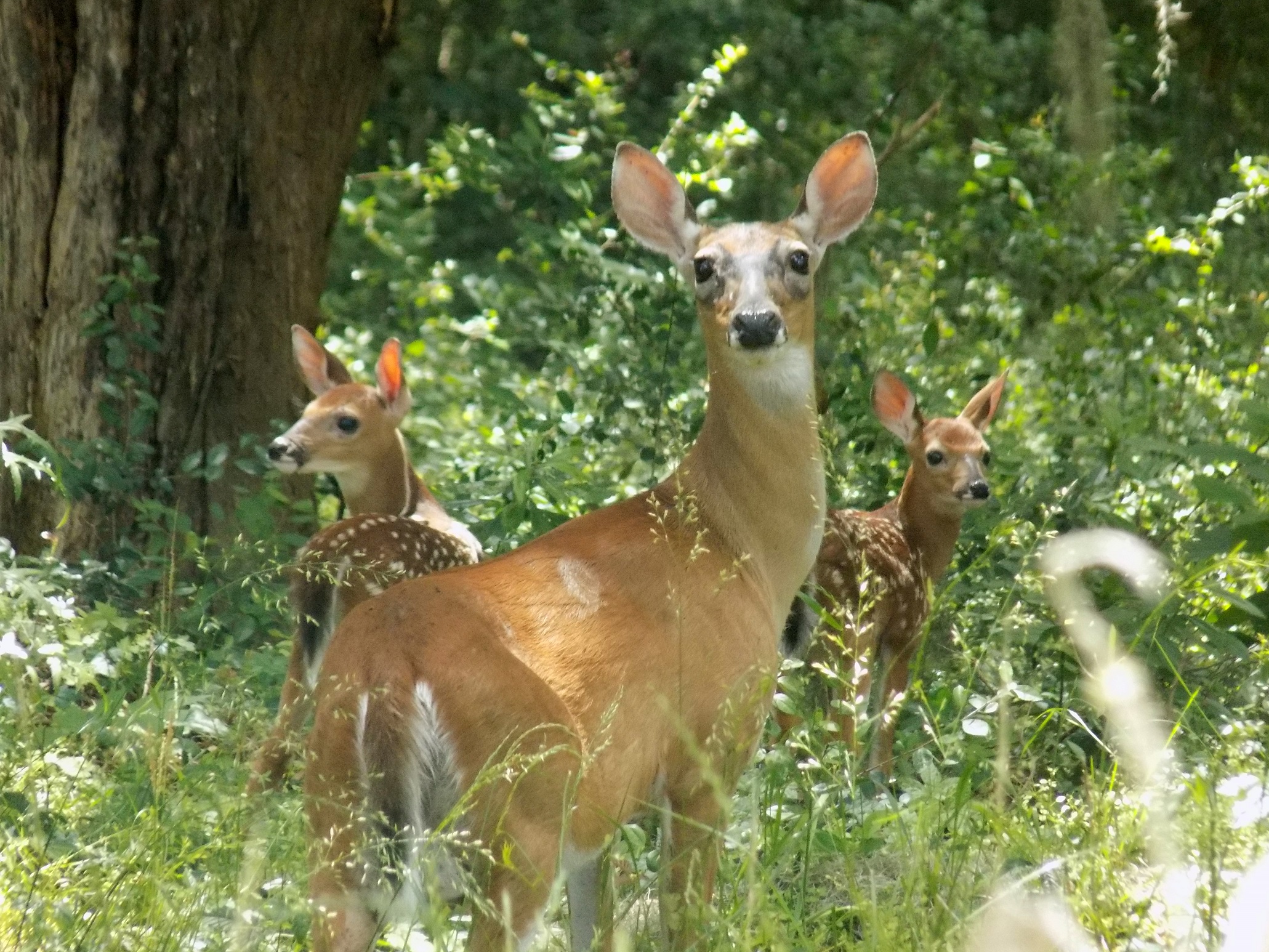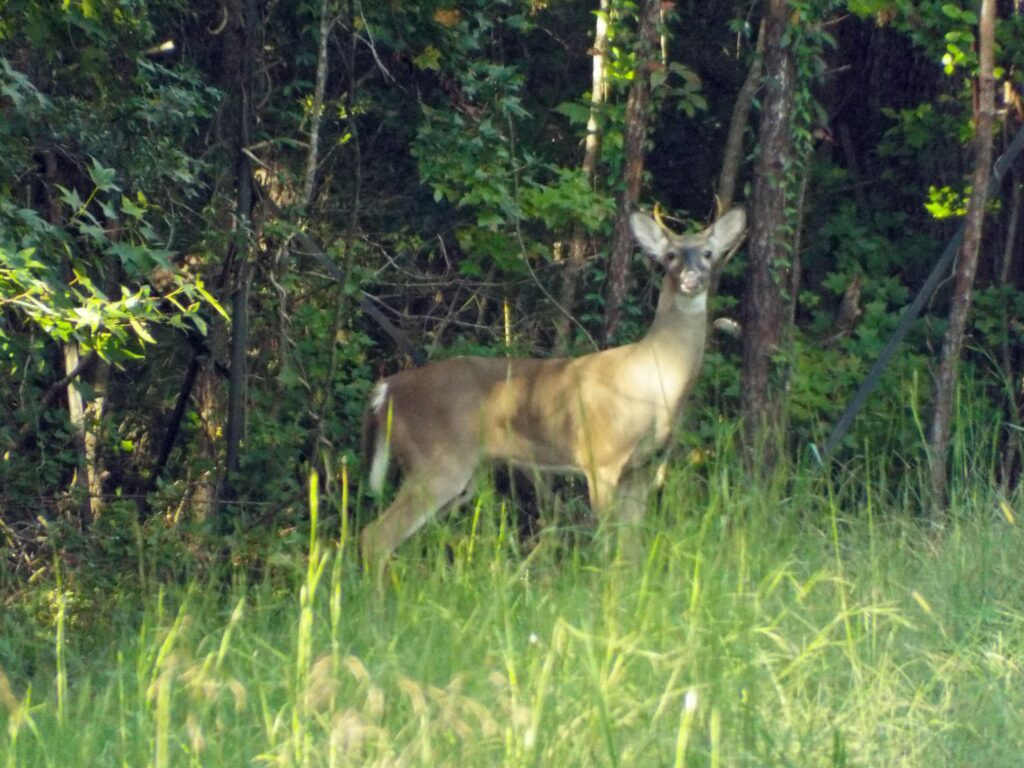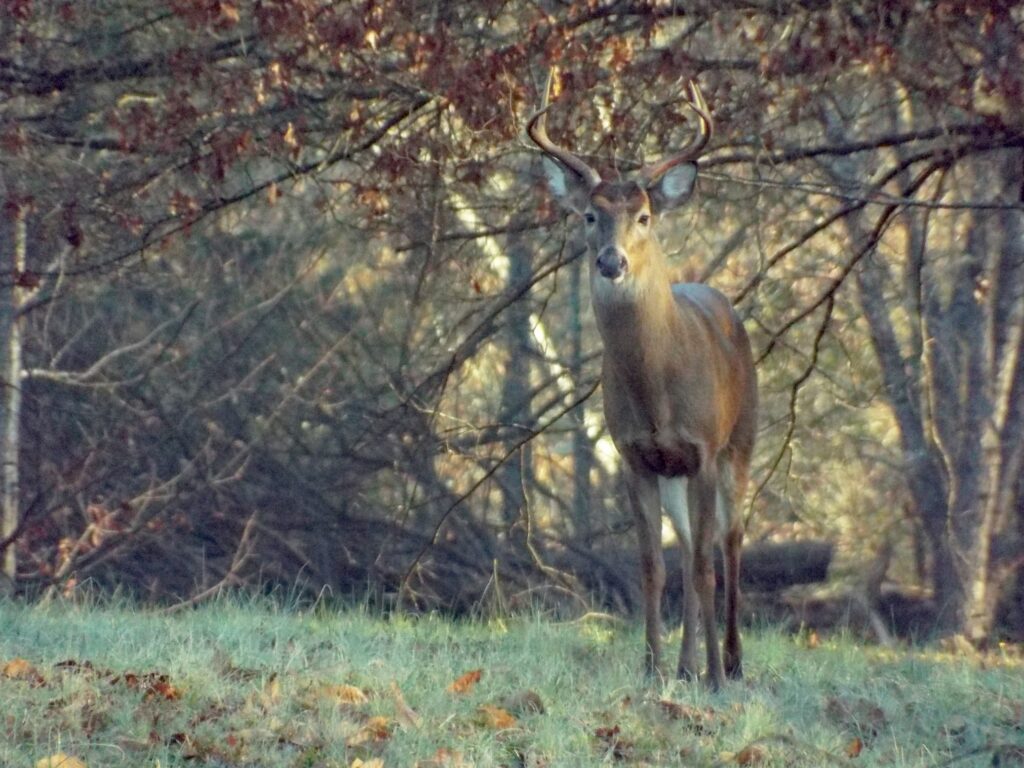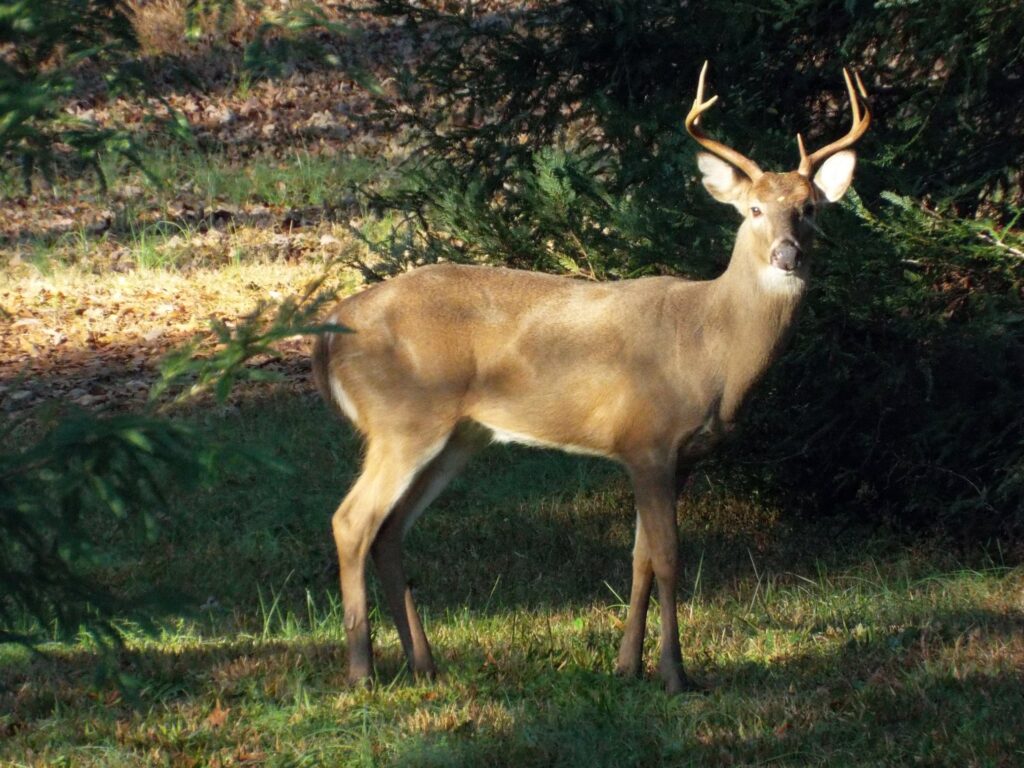



This week for Flora and Fauna Friday, we have a ubiquitous ungulate from across the US. This week we’re taking a gander at the White-tailed Deer (Odocoileus virginianus).
Found everywhere in the United States and Mexico, except the arid southwest, the White-tailed Deer is North America’s most common native ungulate and the only species of ungulate native to Edisto. They are a highly adaptable species found in every terrestrial ecosystem in SC. The subspecies we have inland and here on Edisto is the Southeastern White-tailed Deer (Odocoileus virginianus virginianus). Ungulates are a group of mammals who walk on hooves and whose legs are shaped differently because of it. There are three main classifications of mammal legs, unguligrade, digitigrade, and plantigrade. I’ll explain each of them by how many joints they have in their foot. Humans, bears, opossums, rats, and raccoons are plantigrade. We walk on the heels, balls, and toes of our feet. Dogs, cats, and birds are digitigrade. They walk on just the balls and toes of their feet. Deer, cows, horses, antelopes, and pigs are unguligrade. They walk only on the tips of their toes. A hoof is really just a big toenail!
While we’re on the topic of pedantic biological terminology, members of the Deer family, Cervidae, have antlers. Antlers are a unique feature of the family. They are made of solid bone and attached to the skull by a structure called the pedicle. Except for Caribou, only male deer have antlers and they are shed in late winter each year. In contrast, the horns of cattle and antelope have a hollow bony core coated in a thick layer of keratin, the same substance that makes up their hooves and hair, and horns are not shed but grow continuously. Male deer, called bucks, use their antlers to settle territorial disputes during the rut. The rut is the species’ mating season and bucks become increasingly aggressive and single-minded, forgoing eating and sleeping to fight and mate. They go antler to antler with other bucks over territory and mating rights. Only the strongest and most well fed will prevail. A buck will also use his antlers to defend against predators and to mark his territory by rubbing them and the scent glands on his forehead against small trees. Shed deer antlers are an important source of calcium and phosphorous for some species of wildlife. Rats, mice, rabbits, snails, and Squirrels will rapidly gnaw away at shed antlers as soon as they hit the forest floor. If you’ve ever wondered why you don’t find years’ worth of antlers littering the woods, that’s why!
The White-tailed Deer has been a culturally significant animal in the Southeast as long as humans have lived here. Native Americans on the coast hunted them not just for their meat but for their hide, sinew, and bone. Materials critical for making clothes, bow strings, and tools. White-tailed Deer were an important food source for colonists in early America and for both freedmen and white southerners alike in the financially destitute South after the Civil War. Today, that hunting tradition is still alive and well. Although it’s no longer a dietary necessity for most hunters, the hunting of White-tailed Deer is just as important for wildlife conservation today as it was for the survival for early Americans. White-tailed Deer have lost almost all of their natural predators in the southeast. Cougars and Red Wolves have been extirpated from South Carolina and our Black Bear populations are sparse and isolated. Although a bull Alligator is more than capable of taking a mature Buck, Alligators rarely attack deer. ‘Gators simply have easier prey to hunt. Bobcats and Foxes will hunt fawns. Coyotes fill some of this niche by hunting weak deer and fawns but aren’t large enough to hunt healthy adult deer alone. In rare instances, Coyotes will hunt in packs and are capable of taking mature deer but this is not a common occurrence. Left uncontrolled, deer populations quickly grow to the carrying capacity of the land and induce ecosystem-wide alterations in plant communities by overgrazing their preferred food plants. This continuous and selective plant grazing alters the plant community and, in turn, changes the habitat composition of the area. The habitat composition determines what species of wildlife can live there. These disturbances in the plant community also open up chances for invasive species to establish and further degrade the habitat. White-tailed Deer are generalists and are mostly unfazed by this habitat change. More specialist species, typically rarer and of great concern to conservationists, are pushed out of the habitat and, in extreme cases, may never be able to return. This process is called a “trophic cascade”, an ecological positive-feedback loop that can be devastating to an ecosystem. Luckily, deer hunting prevents this and SCDNR manages White-tailed Deer across the state in excruciating detail to prevent this on public lands. Additionally, the sale of hunting licenses, deer tags, sporting arms, and ammunition provides the lion’s share of funding for all conservation work that happens in this state. That’s funding for all conservation work for all species, not just game species.